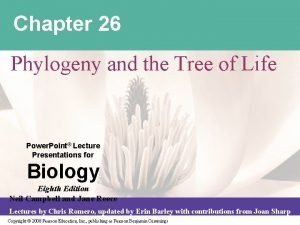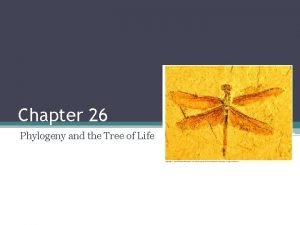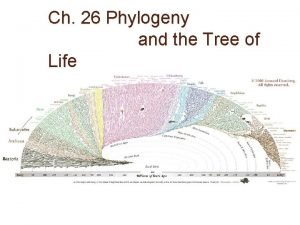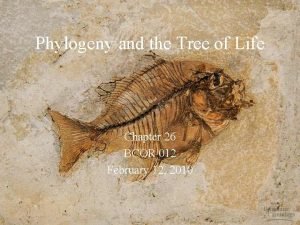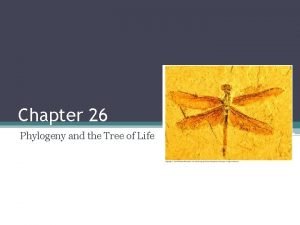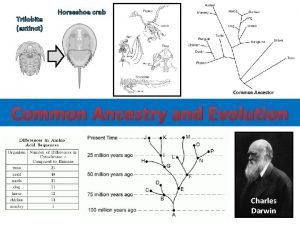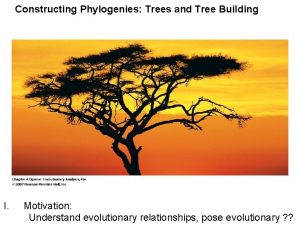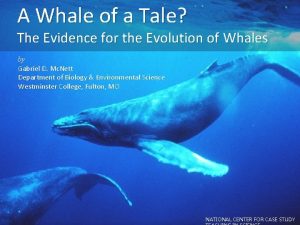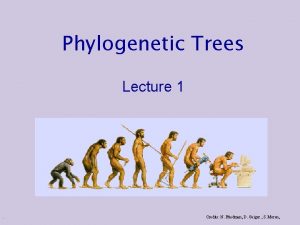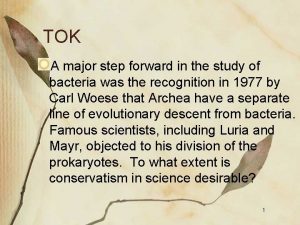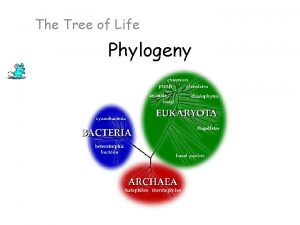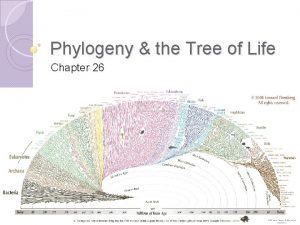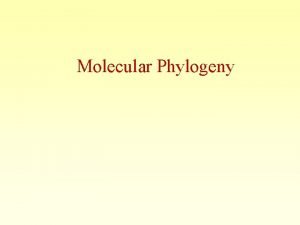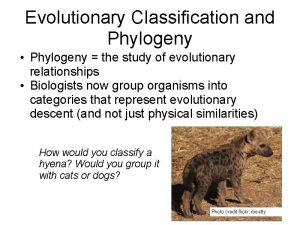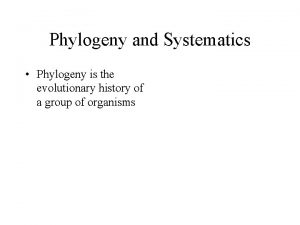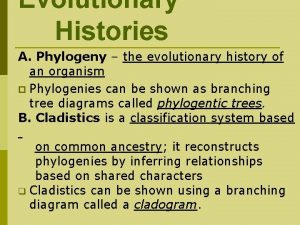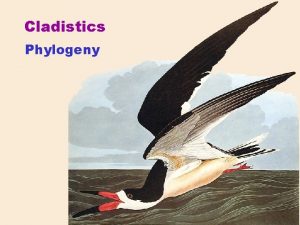Phylogeny The Tree of Life Phylogeny The evolutionary














- Slides: 14

Phylogeny & The Tree of Life

Phylogeny The evolutionary history of a species or group of species.

Convergent Evolution A process in which species from different evolutionary branches may come to resemble each other if they live in similar environments and natural selection favored similar adaptions. Similarity due to convergent evolution is called analogy. The similar structures are called analogous structures.


Systematics Is a discipline of biology that focuses on classifying organisms and determining their evolutionary relationships. Carolus Linnaeus introduced a system of naming and classifying species, called taxonomy. Binomial nomenclature (genus & species

Animal Classification Domains Kingdoms Phylum Classes Order Family Genus Species Each taxonomic unit at any level (ex: family Felidae or class Mammalia) is called a taxon.

Phylogenetic Trees Depict hypotheses about the evolutionary history of a species. Shared characteristics are used to construct phylogenetic trees. They do this by separating homologues structures from analogous structures. They then infer phylogeny from homologous characteristics.

http: //www. youtube. com/watch? v=OYRYQ 6 Y Fsow

Cladistics Method of systematics. Clade- group of species that includes an ancestral species and all of its descendants. This inclusive group of ancestors and descendants is considered to be monophyletic (meaning “single tribe”) Clades reflect the branching pattern of evolution and can be used to construct phylogenetic trees.

§ Cladistics is based on the Darwinian concept that organisms share characteristics with their ancestors and differ from them. Thus, there are two main types of characters. 1. Shared ancestral characters group organisms into clades. 2. Shared derived characters distinguish clades and form the branching points in the tree of life. http: //www. youtube. com/watch? v=3 Dx. Nwzzjm_4

§ An important step in cladistics is the comparison of the – ingroup (the taxa whose phylogeny is being investigated) and – outgroup (a taxon that diverged before the lineage leading to the members of the ingroup), – to identify the derived characters that define the branch points in the phylogeny of the ingroup.


§ Molecular systematics uses DNA and other molecules to infer relatedness. – Scientists have sequenced more than 110 billion bases of DNA from thousands of species. – This enormous database has fueled a boom in the study of phylogeny and clarified many evolutionary relationships – The more recently two species have branched from a common ancestor, the more similar their DNA sequences should be. – The longer two species have been on separate evolutionary paths, the more their DNA should have diverged.

 Aaabbbcccdd
Aaabbbcccdd Chapter 20 phylogeny and the tree of life
Chapter 20 phylogeny and the tree of life Chapter 26 phylogeny and the tree of life
Chapter 26 phylogeny and the tree of life Homologies
Homologies Chapter 26 phylogeny and the tree of life
Chapter 26 phylogeny and the tree of life Chapter 26 phylogeny and the tree of life
Chapter 26 phylogeny and the tree of life Phenogram vs cladogram
Phenogram vs cladogram Trilobite and horseshoe crab
Trilobite and horseshoe crab Phylogenetics vs taxonomy
Phylogenetics vs taxonomy Whale evolutionary tree
Whale evolutionary tree Artiodactyla family tree
Artiodactyla family tree Human phylogenetic tree
Human phylogenetic tree Outgroup on a cladogram
Outgroup on a cladogram What is a sister group in phylogeny
What is a sister group in phylogeny Phylogenetic relationship of protochordates
Phylogenetic relationship of protochordates
